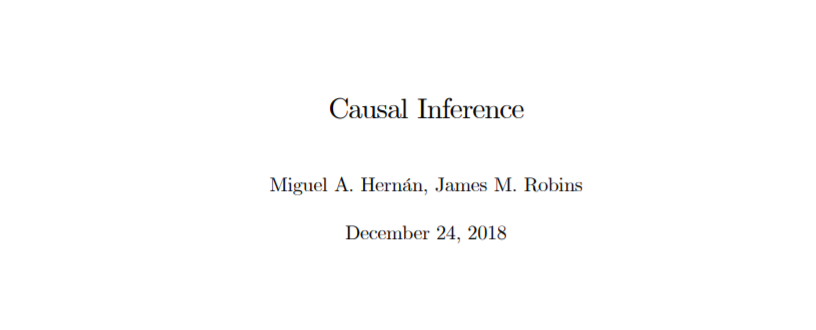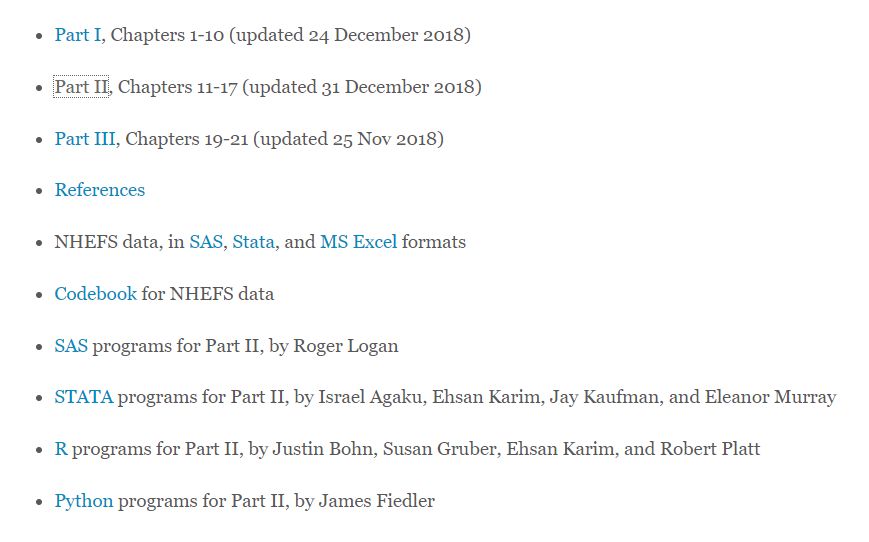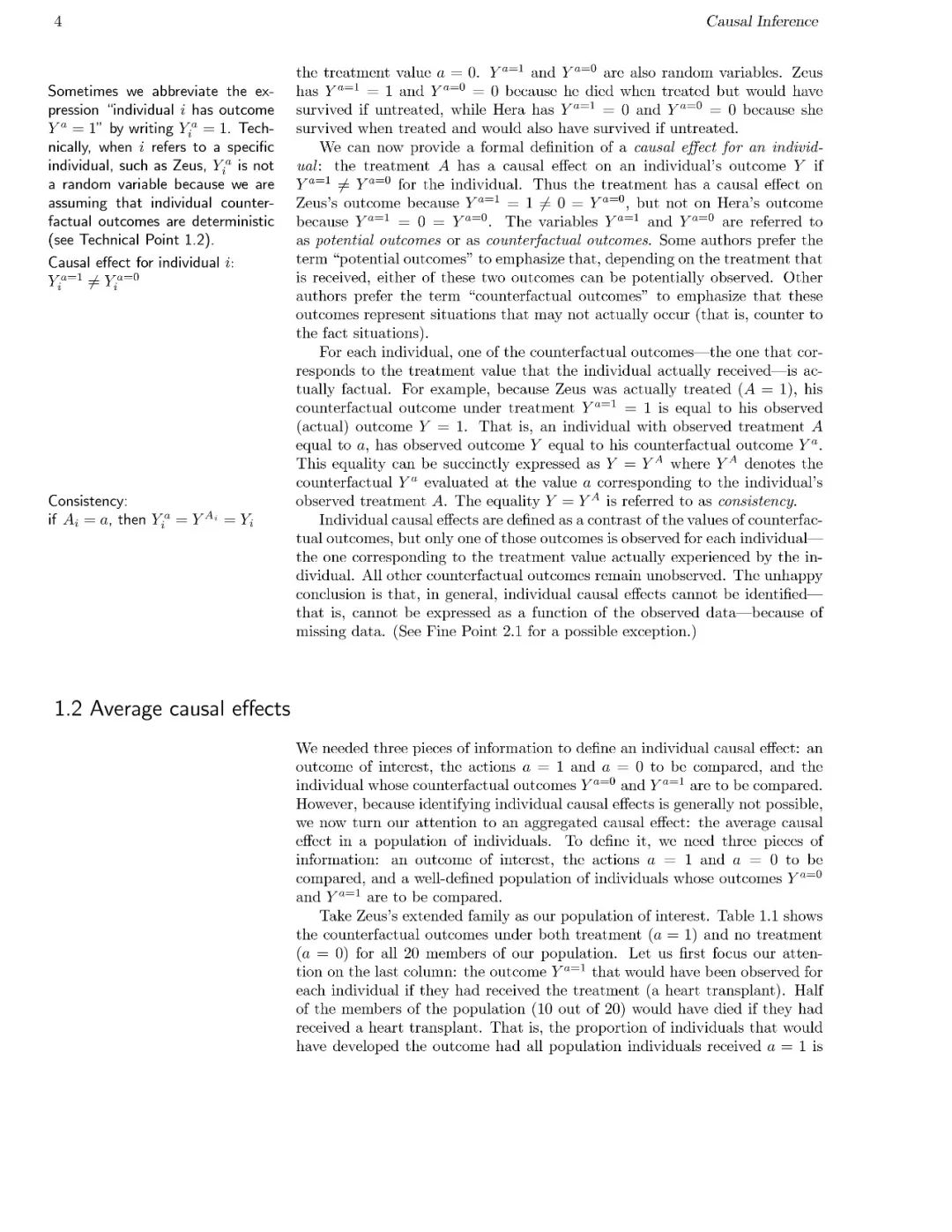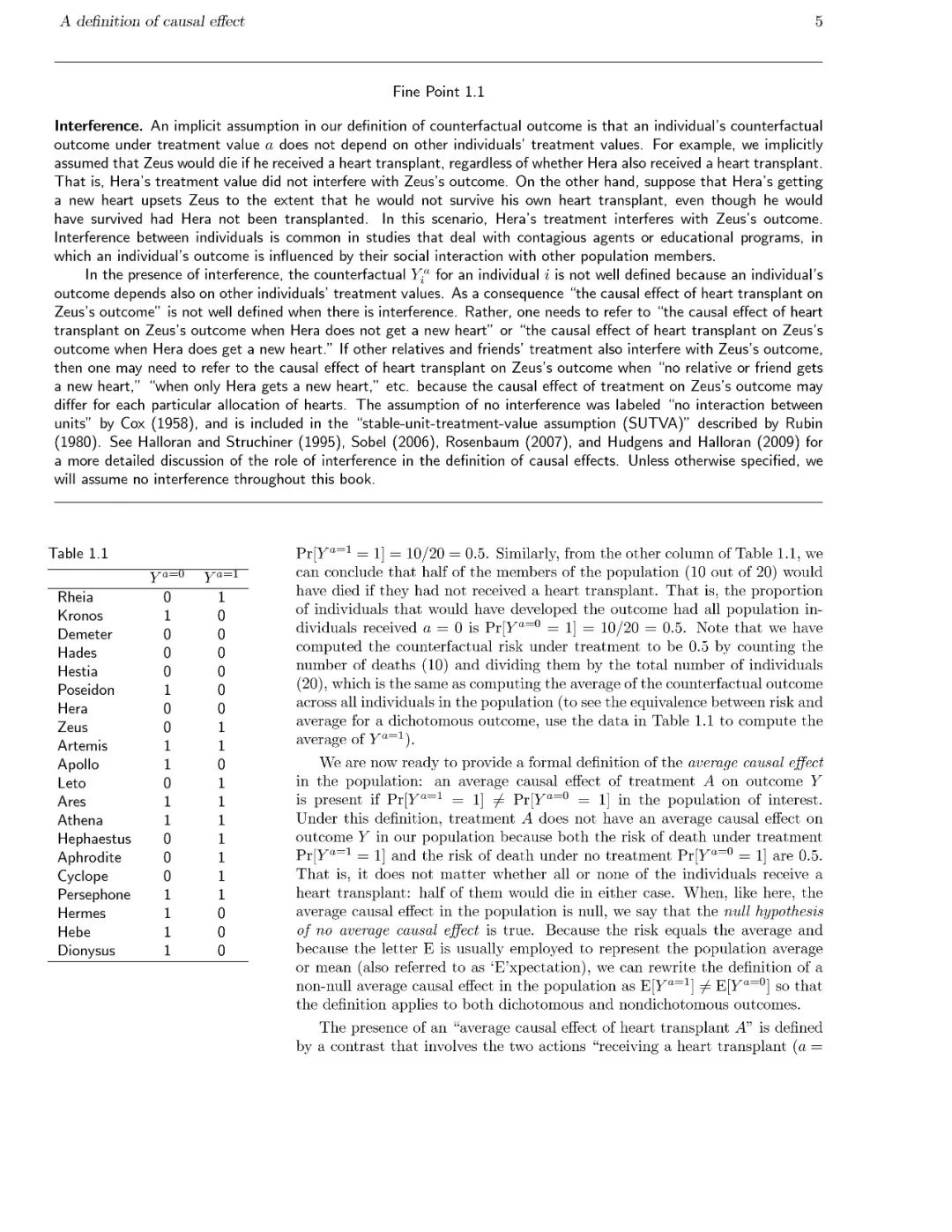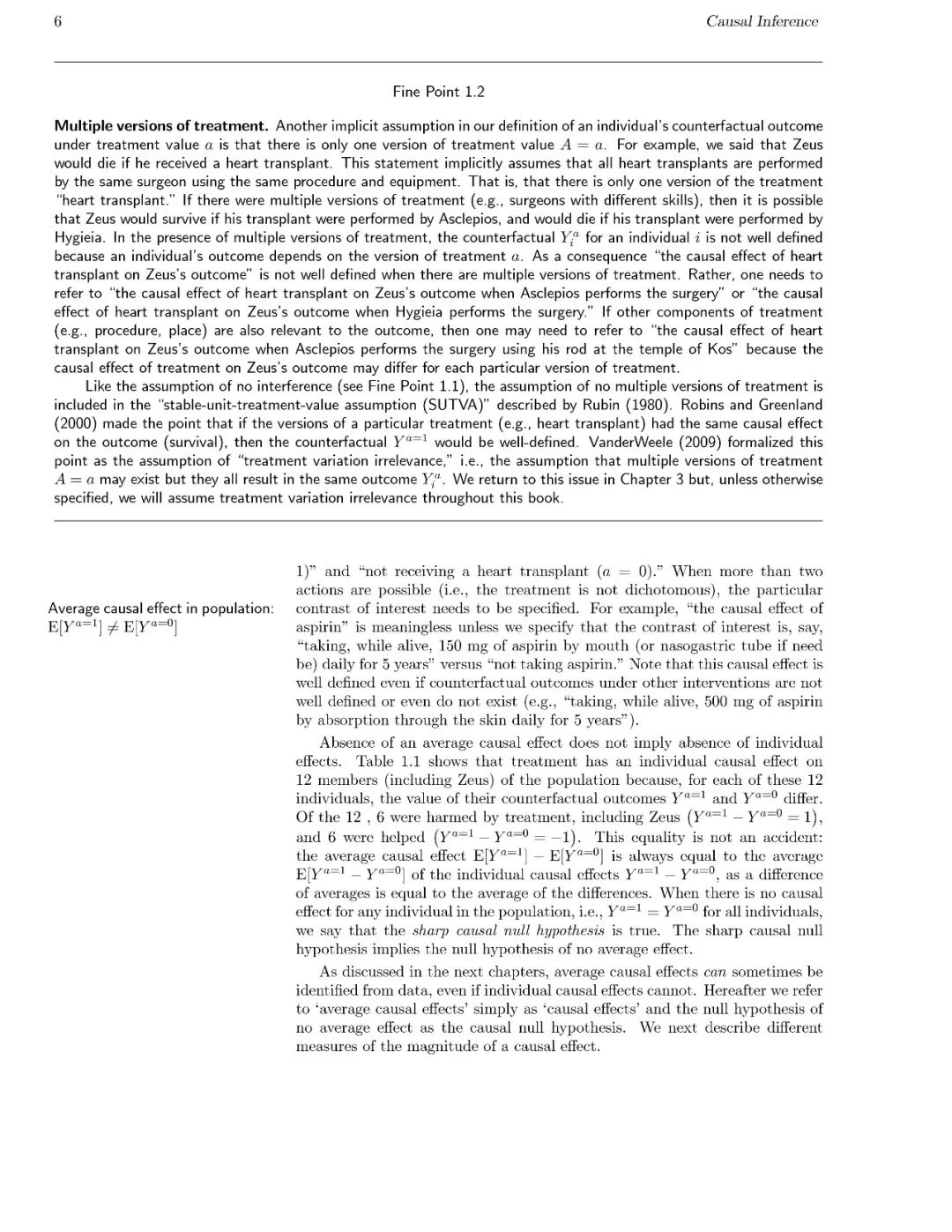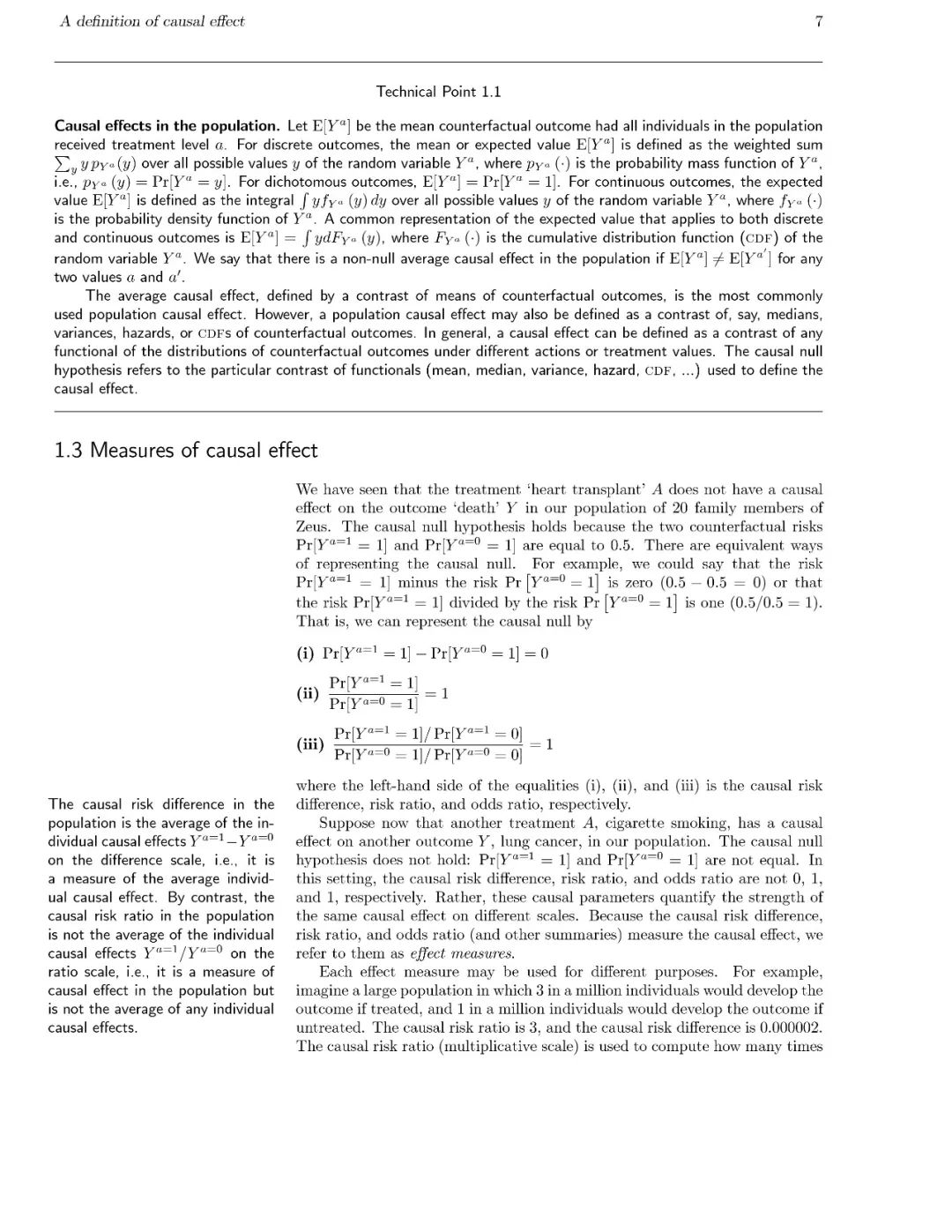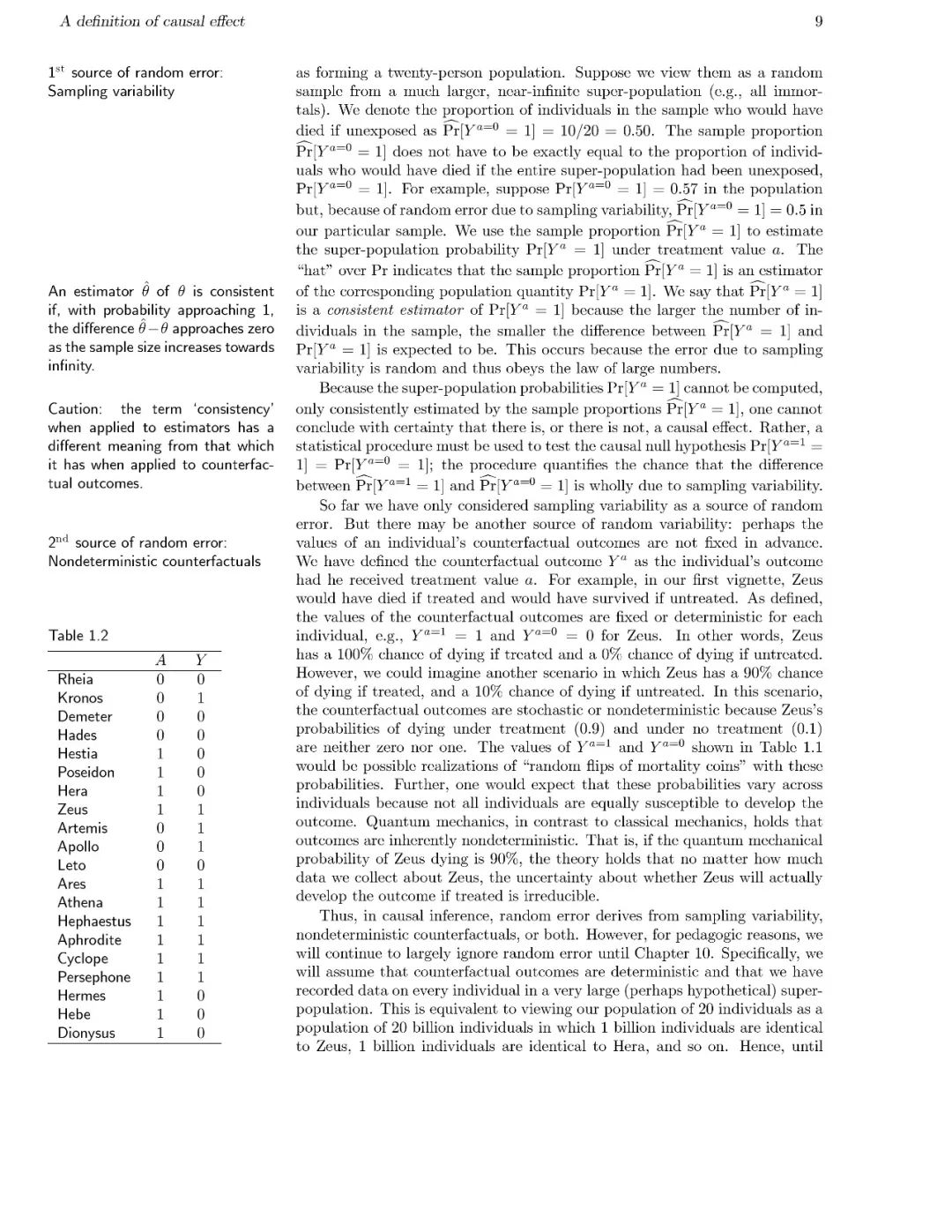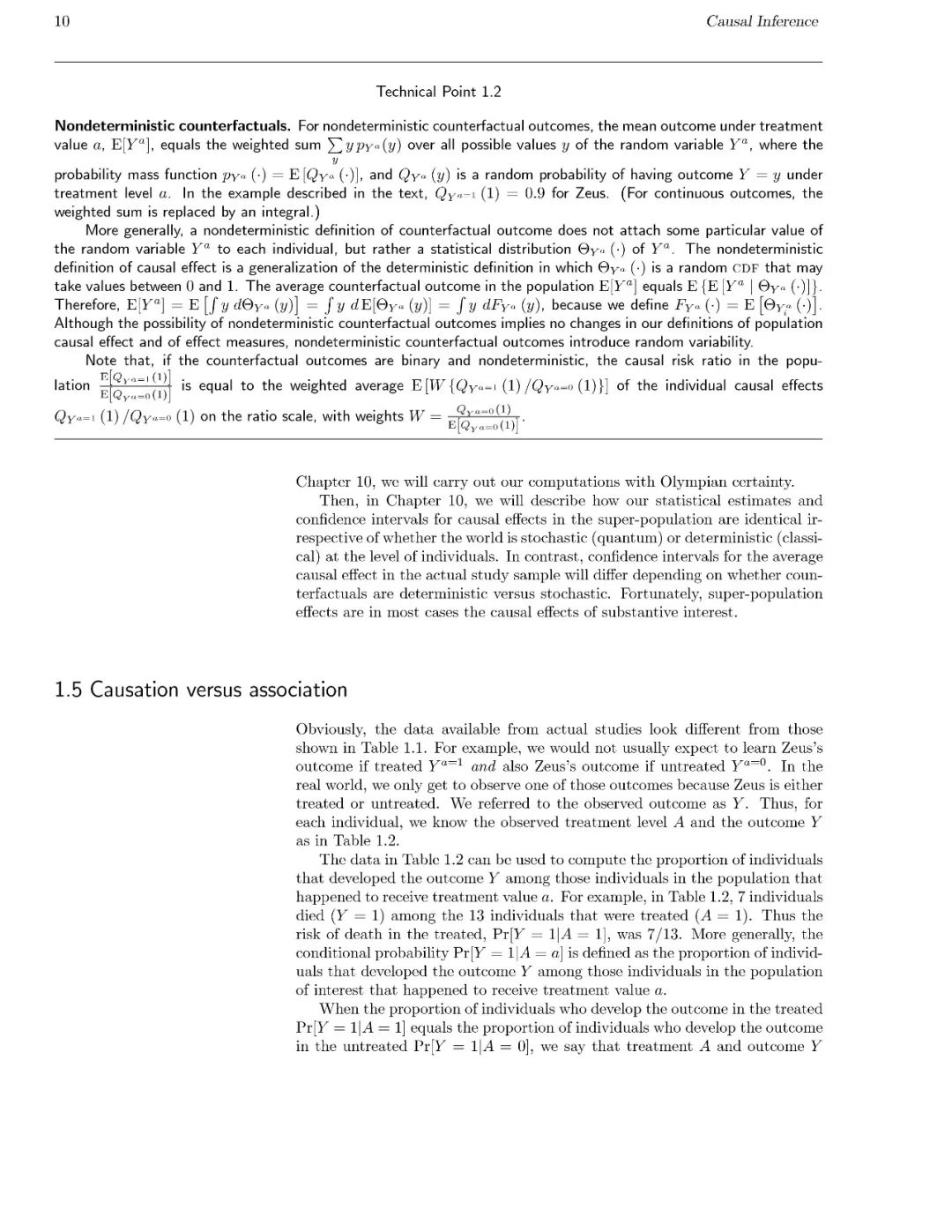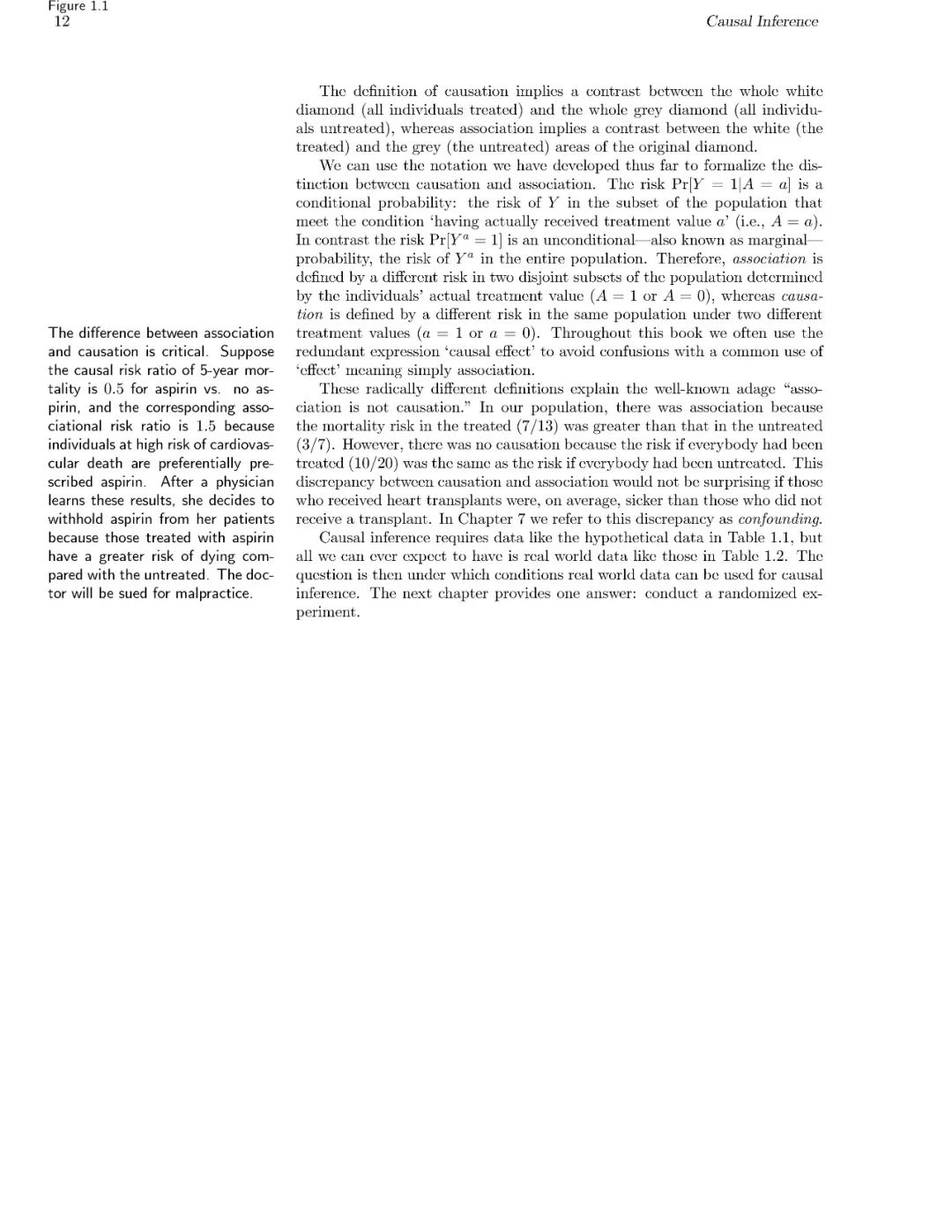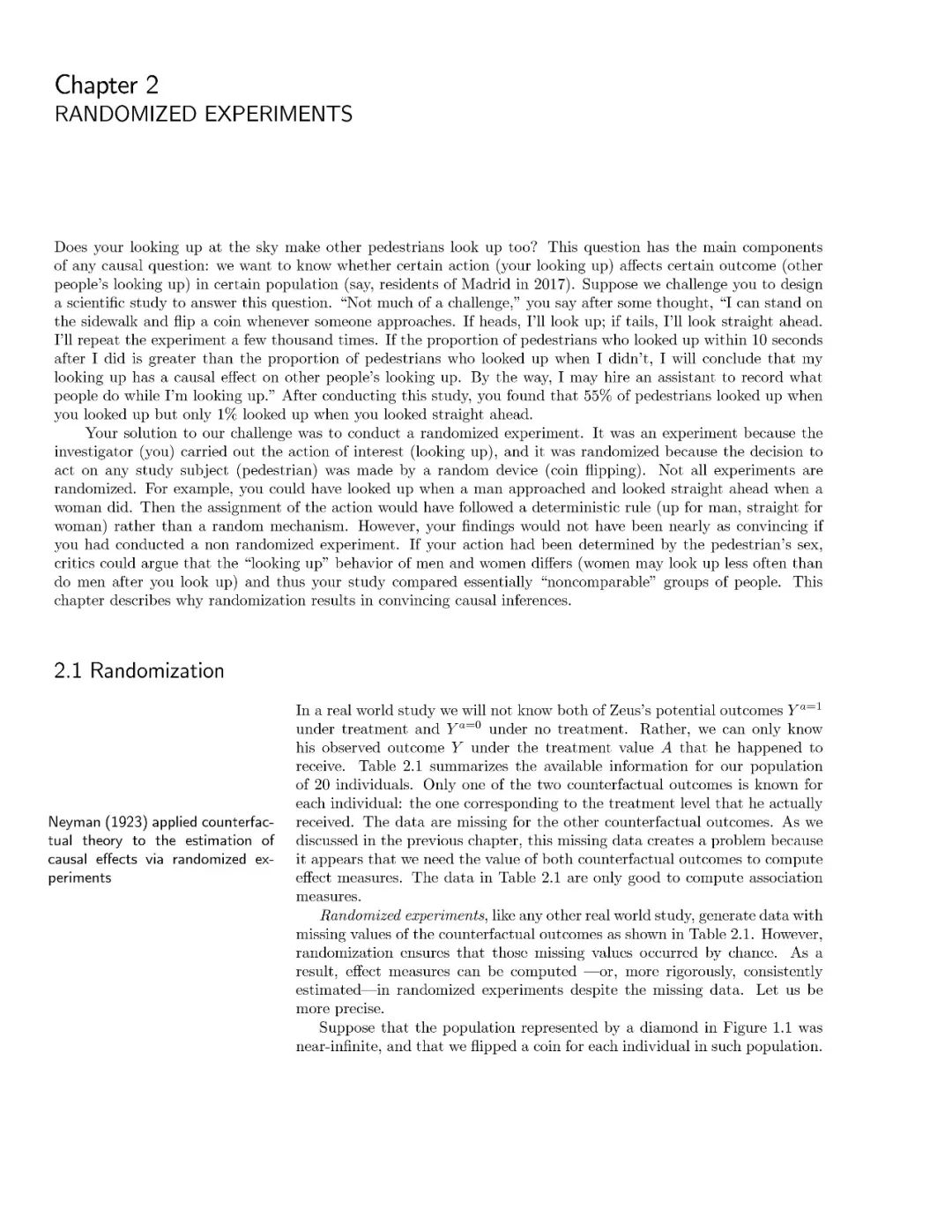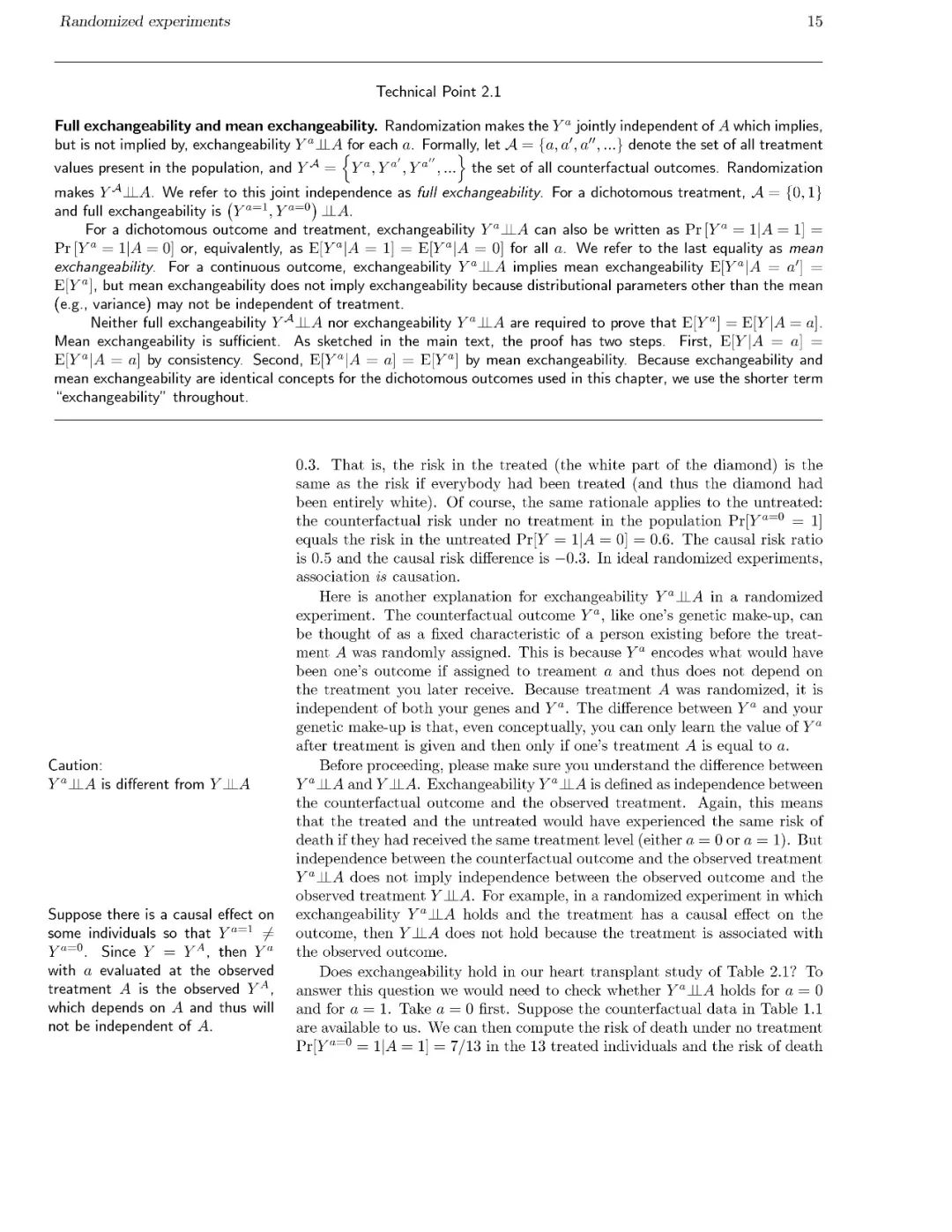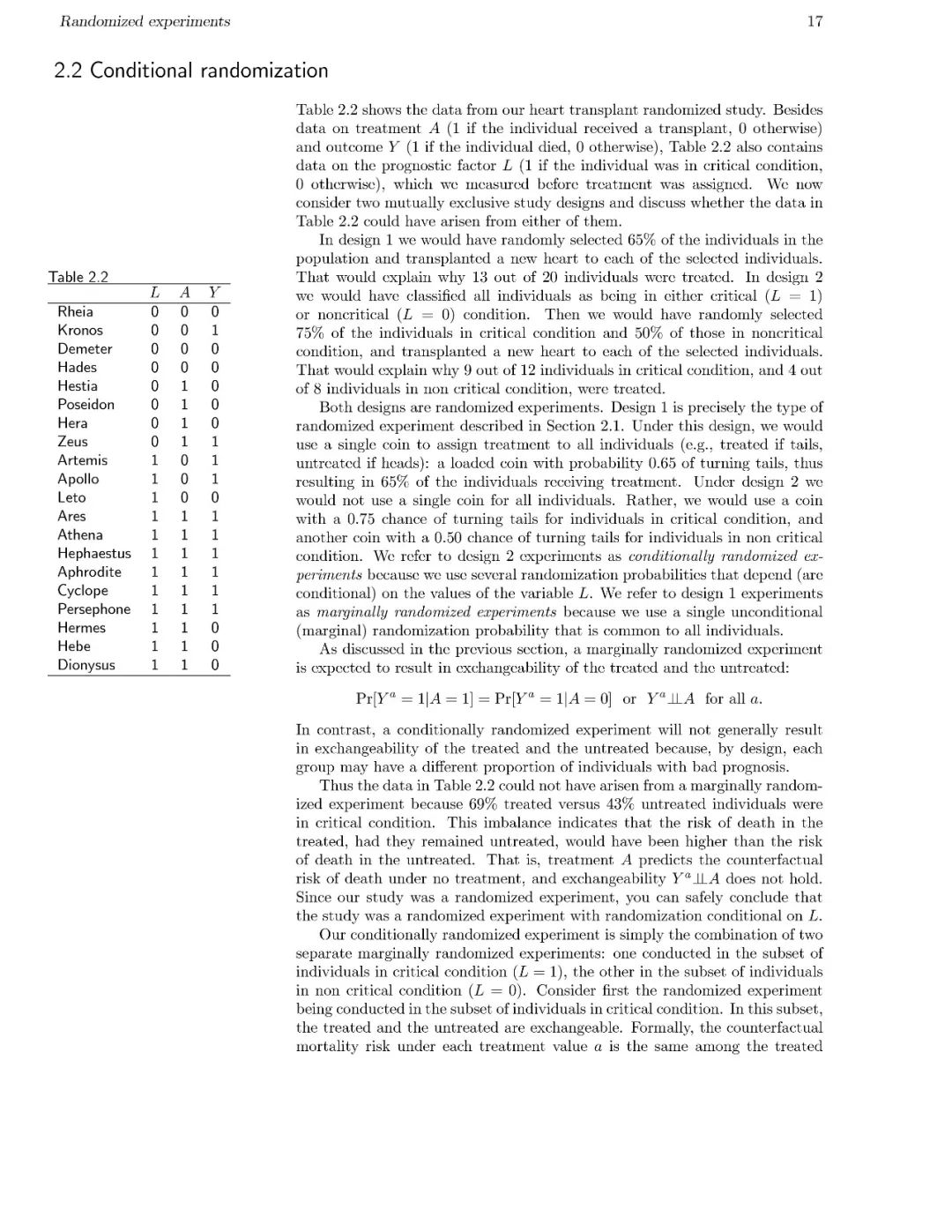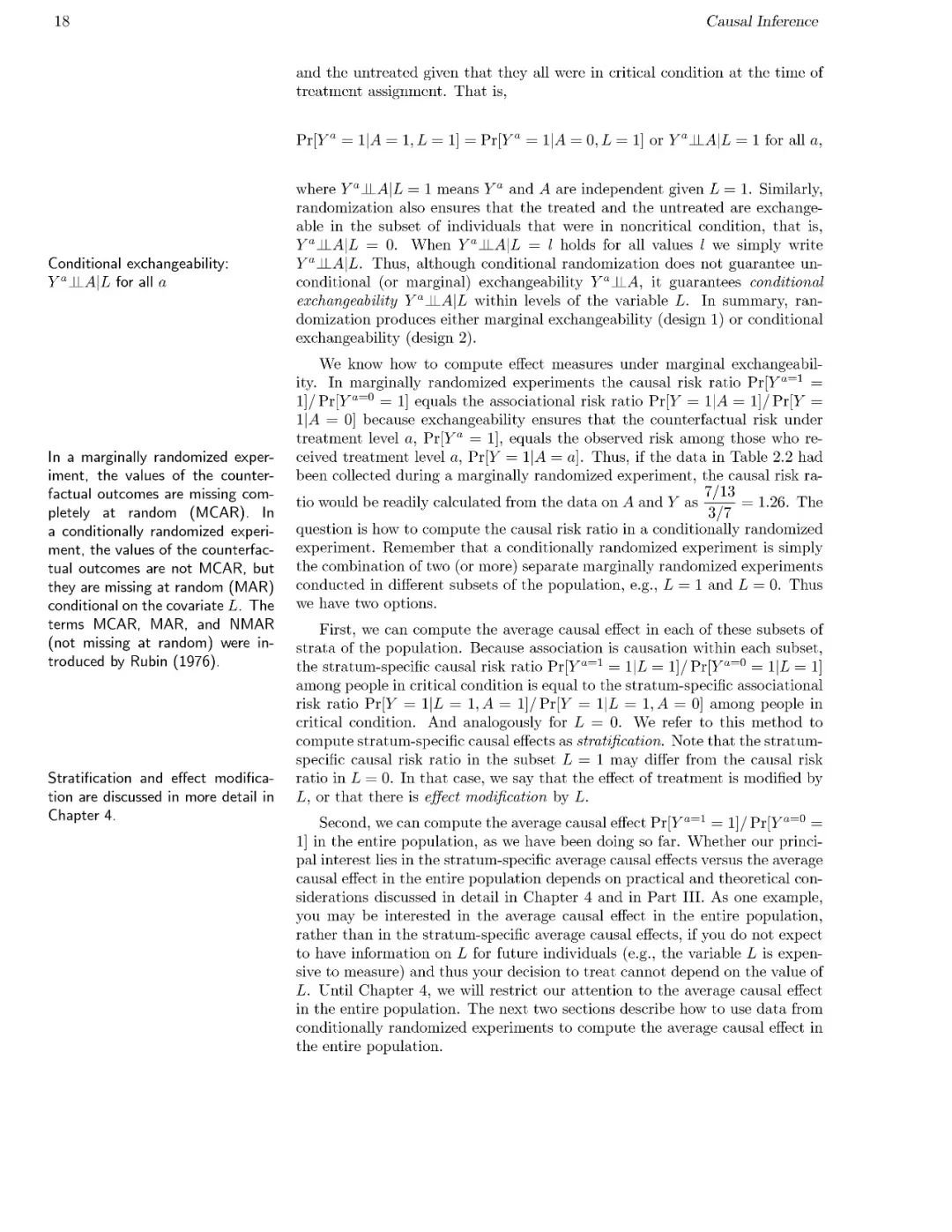哈佛大学Miguel Hernan科学家最新2019年《因果推断:概念与方法》书稿终版,280页讲解因果效应(附下载)
【导读】哈佛大学公共卫生学院(HSPH)Miguel Hernan与Jamie Robins 教授共同编著了关于因果逻辑推断方面的书作《因果推断:概念与方法》,总共分3个部分,21章,280多页,对因果推理的概念和方法做了系统性阐述,是各个领域包括经济学、健康医疗、心理学、计算机等从业人士的重要参鉴材料。
Hernán MA, Robins JM (2019). Causal Inference. Boca Raton: Chapman & Hall/CRC, forthcoming.
【Miguel Hernan教授因果推断书稿下载】
请关注专知公众号(扫一扫最下面专知二维码,或者点击上方蓝色专知)
后台回复“CI2019” 就可以获取《因果推断:概念与方法》的下载链接~
专知2019年1月将开设《深度学习:算法到实战》课程,欢迎关注报名!
专知开课啦!《深度学习: 算法到实战》, 中科院博士为你讲授!
简介
我(Miguel Hernan)和同事杰米·罗宾斯(Jamie Robins)正在写一本书,书中对因果推理的概念和方法进行了连贯的介绍。目前,这些材料大多分散在几个学科的期刊上,或者局限于技术文章。我们希望这本书能引起任何对因果推理感兴趣的人的兴趣,例如流行病学家、统计学家、心理学家、经济学家、社会学家、政治学家、计算机科学家……这本书分为三个难度越来越大的部分:没有模型的因果推理、有模型的因果推理和复杂纵向数据的因果推理。
目录
Introduction: Towards less casual causal inferences v
I Causal inference without models 1
1 Adefinition of causal effect 3
1.1 Individual causal effects. . . . 3
1.2 Average causal effects . . . 4
1.3 Measures of causal effect. . . 7
1.4 Random variability . . . 8
1.5 Causation versus association . . . . 10
2 Randomized experiments 13
2.1 Randomization . . . 13
2.2 Conditional randomization . . . . 17
2.3 Standardization . . . . . 19
2.4 Inverse probability weighting . . 20
3 Observational studies 25
3.1 Identifiability conditions . . 25
3.2 Exchangeability . . 27
3.3 Positivity . . . . 30
3.4 Consistency: First, define the counterfactual outcome . . 31
3.5 Consistency: Second, link to the data . . . 35
3.6 The target trial . . 36
4 Effect modification 41
4.1 Definition of effect modification . . 41
4.2 Stratification to identify effect modification . . . . 43
4.3 Why care about effect modification. . . . 45
4.4 Stratification as a formof adjustment . . . 47
4.5Matching as another formof adjustment . 49
4.6 Effect modification and adjustmentmethods. . 50
5 Interaction 55
5.1 Interaction requires a joint intervention. . . . 55
5.2 Identifying interaction . . . . 56
5.3 Counterfactual response types and interaction. . . . 58
5.4 Sufficient causes . . . . . . 60
5.5 Sufficient cause interaction. . 63
5.6 Counterfactuals or sufficient-component causes?. . . . 65
6 Graphical representation of causal effects 69
6.1 Causal diagrams . . . . 69
6.2 Causal diagrams andmarginal independence . . . . 72
6.3 Causal diagrams and conditional independence . . . 73
6.4 Positivity and well-defined interventions in causal diagrams . . 75
6.5 A structural classification of bias. . . . . . 79
6.6 The structure of effect modification . . . . . . 80
7 Confounding 83
7.1 The structure of confounding . . . 83
7.2 Confounding and exchangeability . . . . 85
7.3 Confounders . . . . . 86
7.4 Single-world intervention graphs. . . . . 91
7.5 How to adjust for confounding . . . 93
8 Selection bias 97
8.1 The structure of selection bias . . . . 97
8.2 Examples of selection bias. . . . . . . . 99
8.3 Selection bias and confounding . 101
8.4 Selection bias and censoring .. . . . . . . 103
8.5 How to adjust for selection bias . . . . . . . . 105
8.6 Selection without bias . . . 108
9 Measurement bias 111
9.1Measurement error . . . . . 111
9.2 The structure ofmeasurement error. . . . . 112
9.3 Mismeasured confounders . . . . . . 114
9.4 Intention-to-treat effect: the effect of a misclassified treatment . 115
9.5 Per-protocol effect . . . . . . 117
10 Random variability 121
10.1 Identification versus estimation . . . . 121
10.2 Estimation of causal effects . . 124
10.3 Themyth of the super-population . . . . . . 126
10.4 The conditionality “principle” . . . . . . . 127
10.5 The curse of dimensionality . . . . . . . 131
II Causal inference with models 1
11 Why model? 3
11.1 Data cannot speak for themselves .. . . . 3
11.2 Parametric estimators . . . . . . . . . . . 5
11.3 Nonparametric estimators . . . . . . . 6
11.4 Smoothing . . . .. . . . 7
11.5 The bias-variance trade-off . . . . . . . 9
12 IP weighting and marginal structural models 11
12.1 The causal question . . . . . . . . . . . 11
12.2 Estimating IP weights viamodeling . . . . . 12
12.3 Stabilized IP weights . . . . . . .. . . . 14
12.4Marginal structuralmodels . . . . . 17
12.5 Effect modification andmarginal structural models . . . . 19
12.6 Censoring andmissing data. . . 20
13 Standardization and the parametric g-formula 23
13.1 Standardization as an alternative to IP weighting . . . 23
13.2 Estimating themean outcome viamodeling . . 25
13.3 Standardizing the mean outcome to the confounder distribution 26
13.4 IP weighting or standardization? . . . . 28
13.5 How seriously do we take our estimates? . . . . 29
14 G-estimation of structural nested models 31
14.1 The causal question revisited . .. . . 31
14.2 Exchangeability revisited . . .. . . . . . . . 32
14.3 Structural nestedmeanmodels . . . .. . . . . . 33
14.4 Rank preservation . . . . . 35
14.5 G-estimation .. . . 37
14.6 Structural nestedmodels with two ormore parameters . . . . . 39
15 Outcome regression and propensity scores 43
15.1 Outcome regression . . . .. . . . 43
15.2 Propensity scores . . . . . . . . 45
15.3 Propensity stratification and standardization . . . 46
15.4 Propensitymatching . . . . . . . . 48
15.5 Propensitymodels, structural models, predictivemodels . . . . 49
16 Instrumental variable estimation 53
16.1 The three instrumental conditions . . . .. . . 53
16.2 The usual IV estimand . . . . . . . . . . . . 56
16.3 A fourth identifying condition: homogeneity . . . . 58
16.4 An alternative fourth condition: monotonicity . . . 61
16.5 The three instrumental conditions revisited . . .. . 63
16.6 Instrumental variable estimation versus other methods . . . . . 66
17 Causal survival analysis 69
17.1 Hazards and risks . . . . .. . 69
17.2 Fromhazards to risks . . . . . 71
17.3Why censoringmatters . . . . . . . 74
17.4 IP weighting ofmarginal structural models. . . 76
17.5 The parametric g-formula . . . . . 77
17.6 G-estimation of structural nestedmodels . . . 79
18 Variable selection for causal inference (coming in 2019) 83
III Causal inference from complex longitudinal data 1
19 Time-varying treatments 3
19.1 The causal effect of time-varying treatments . . . . 3
19.2 Treatment strategies . . . . . . 4
19.3 Sequentially randomized experiments . . . . 5
19.4 Sequential exchangeability . . . . . . . . 8
19.5 Identifiability under some but not all treatment strategies . . . 9
19.6 Time-varying confounding and time-varying confounders . . . . 13
20 Treatment-confounder feedback 15
20.1 The elements of treatment-confounder feedback . . 15
20.2 The bias of traditional methods . . . . . . . 17
20.3Why traditionalmethods fail . . . . . 19
20.4 Why traditional methods cannot be fixed . . . 21
20.5 Adjusting for past treatment . . . . . . 22
21 G-methods for time-varying treatments 25
21.1 The g-formula for time-varying treatments . . . . 25
21.2 IP weighting for time-varying treatments . . . 28
21.3 A doubly robust estimator for time-varying treatments . . . . . 33
21.4 G-estimation for time-varying treatments . . . . 35
21.5 Censoring is a time-varying treatment . . . 41
-END-
专 · 知
专知开课啦!《深度学习: 算法到实战》, 中科院博士为你讲授!
请加专知小助手微信(扫一扫如下二维码添加),咨询《深度学习:算法到实战》参团限时优惠报名~

欢迎微信扫一扫加入专知人工智能知识星球群,获取专业知识教程视频资料和与专家交流咨询!
请PC登录www.zhuanzhi.ai或者点击阅读原文,注册登录专知,获取更多AI知识资料!

点击“阅读原文”,了解报名专知《深度学习:算法到实战》课程

